Wood Lithography (Mokulito) Prints with Watercolor
I’ve been experimenting with the use of watercolor to print full-color backgrounds on mokulito (wood lithography) prints. Applying tube watercolors directly to the wood plate for a second run through the press has yielded interesting, varied results.
I don’t have a full color suite of traditional oil-based printmaking inks. I prefer to use water wash-up inks like Caligo and Akua in my studio, and I understand they dont work well with mokulito.
The only traditional intaglio color inks I have are small samples from Hawthorn Stay Open inks (which are lovely). So I used them, along with watercolors, on this still life mokulito print.
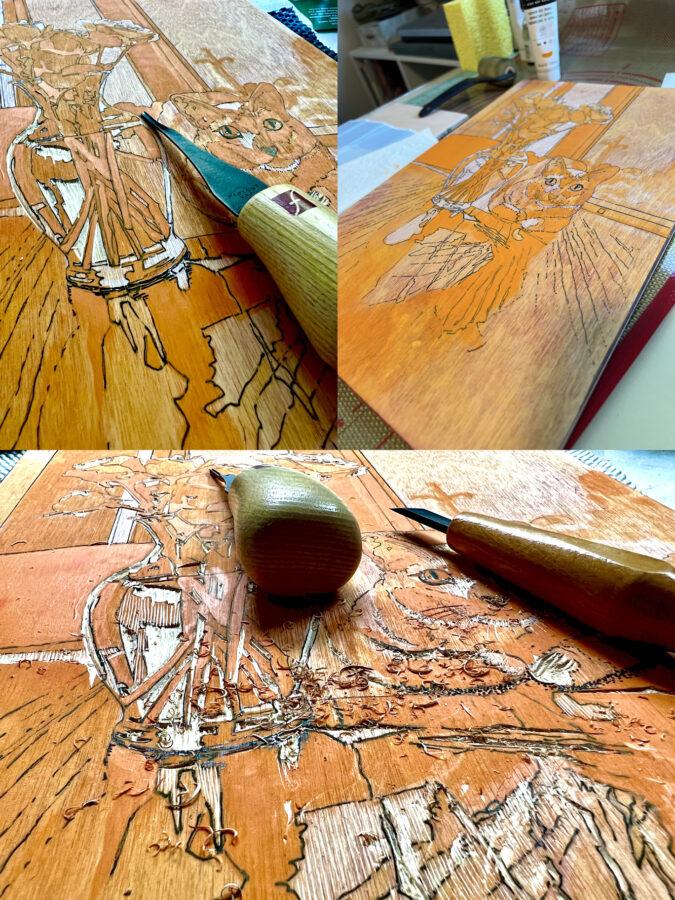
Oil-Based Printmaking Ink
In this experimental still life of a cat next to a vase of flowers, I printed the mokulito wood litho print first, in a dark gray-brown pigment using traditional oil-based Hawthorn inks.
After the ink dried, I applied juicy, tube watercolors directly to the wood after swabbing the surface with a wet sponge. Next, I pressed the still-damp watercolor treated mokulito block against the previously printed Mokulito prints to see how much color would transfer.
If you’re new to this printmaking method, visit this post to read about the origins of mokulito, and the workshop I took to learn about the materials and process to try making these prints in a non-toxic approach.
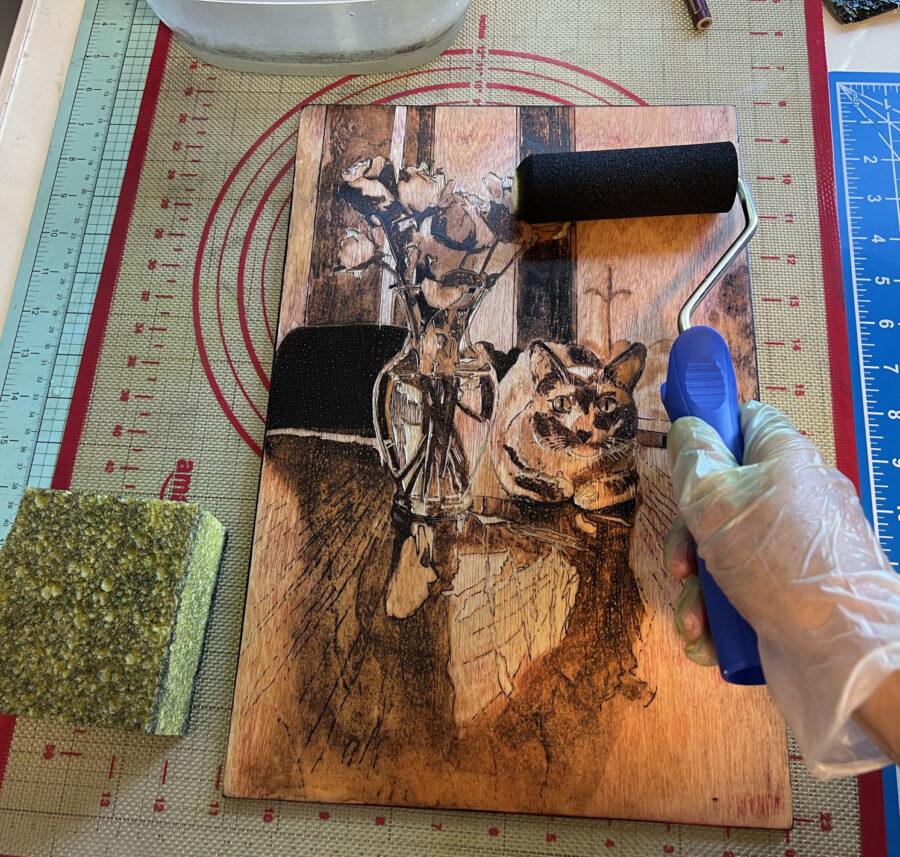
Mokulito Printing from Acrylic Paint
Since the printable element on the wooden plate originates as a painting done in acrylics, I used a single, very bright color of Liquitex Heavy Body Acrylic paint. The images I painted on the first few Mokulito plates were bright Magenta, borrowed from the generous Jeff Sippel. Now, I’ve acquired my very own tube of Cadmium Free Orange (like this).
The brightly-hued pigment makes it easier to gauge how much printmaking ink you’ve got rolled onto the plate. The build-up is done slowly, in many layers, alternating between a wet sponge and an ink-charged foam roller.
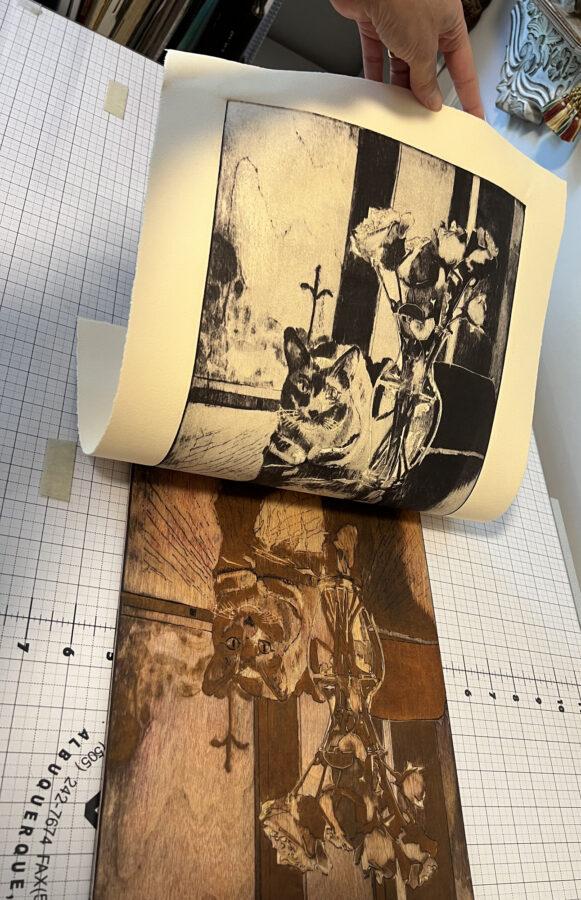
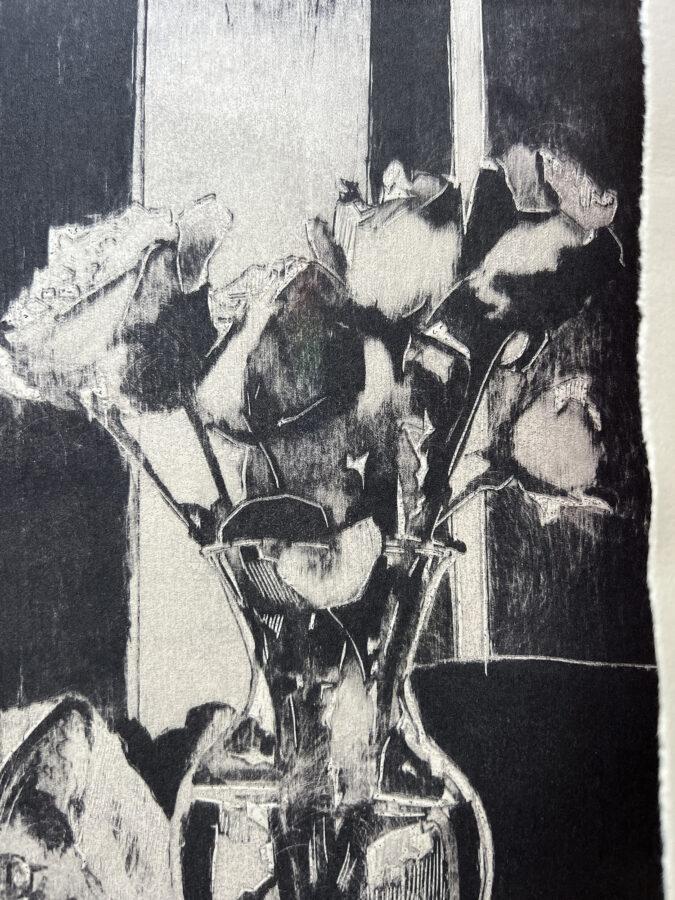
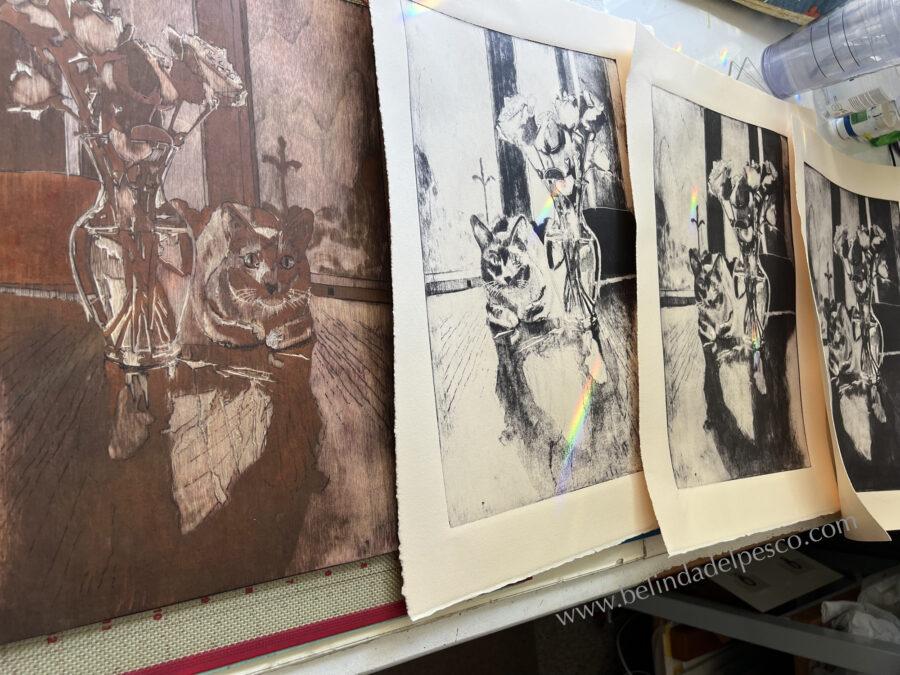
Pulling a Mokulito Print with Watercolor
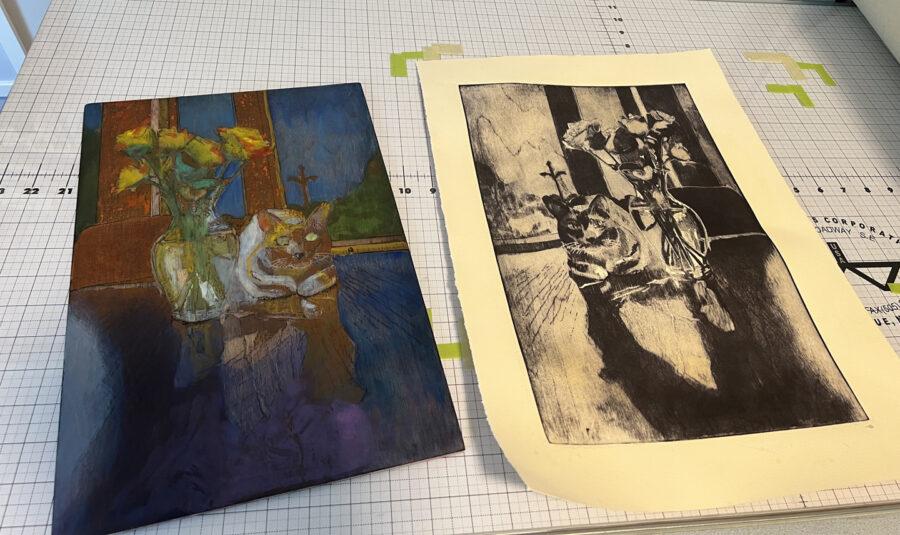
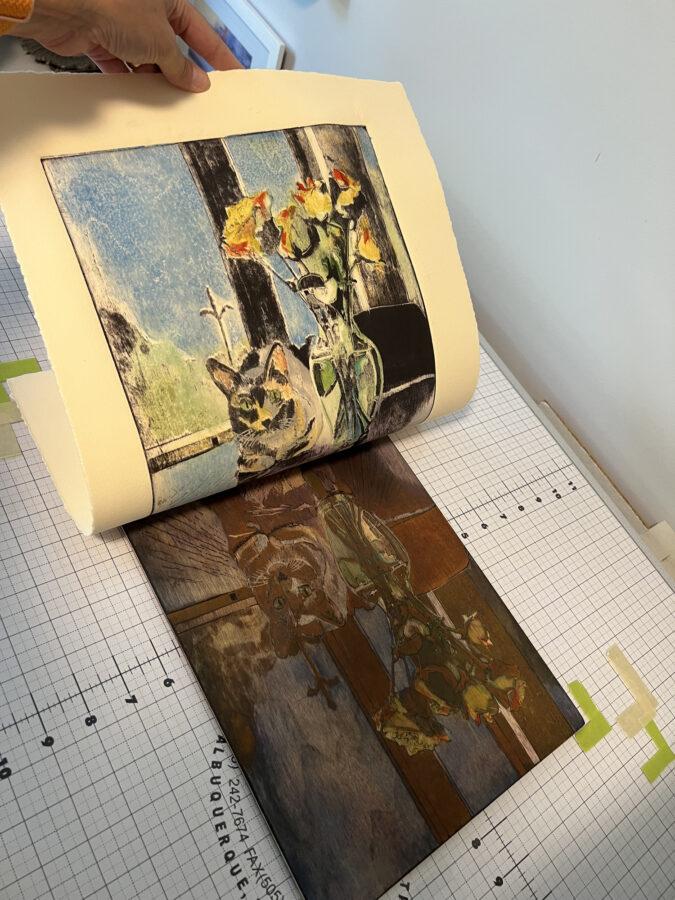
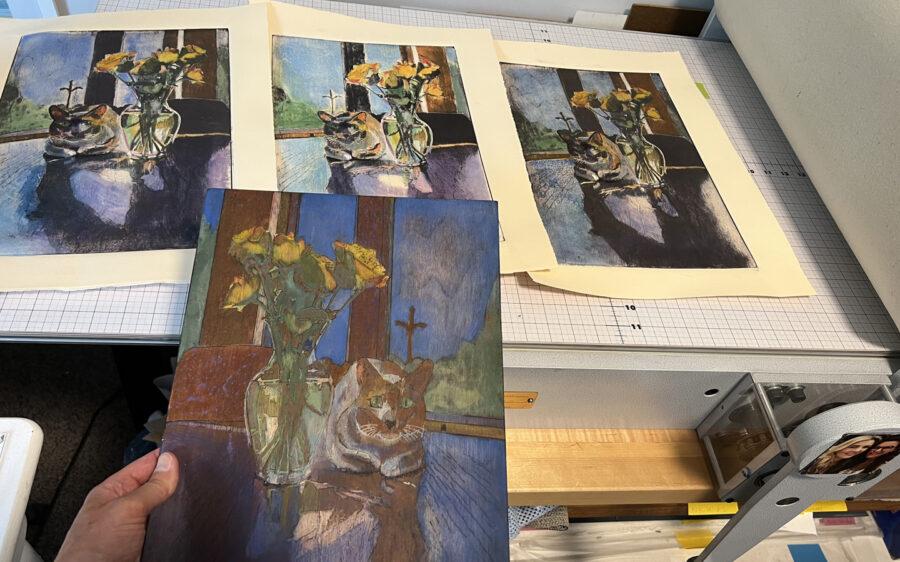
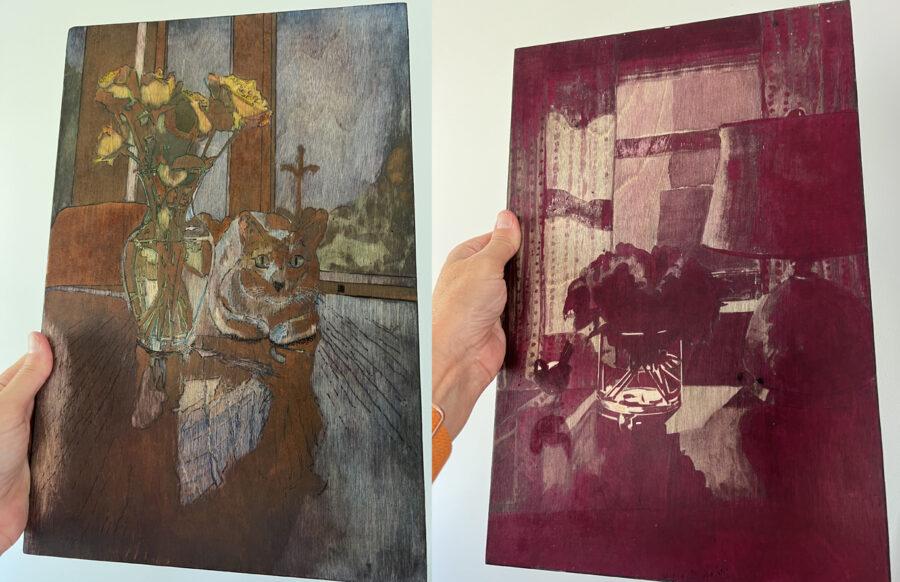
More Mokulito
I’m glad you’re enjoying my foray into wood lithography. Thanks for all the emails, comments and encouraging feedback. The first and second post I published on Mokulito has some resources for you.
If you’d like to read more about Wood Lithography, look at Danielle Creenaune’s essay about the process here. And if you know other helpful details about methods and materials online, please share them in the comments.
Thanks for stopping by, and I’ll see you in the next post –
Belinda
P.S. In case you’re more of a painter, and less interested in printmaking, take a look at my friend Carol Marine’s gallery for some exquisite paintings, creative inspiration, and a tickle towards your collecting urges.
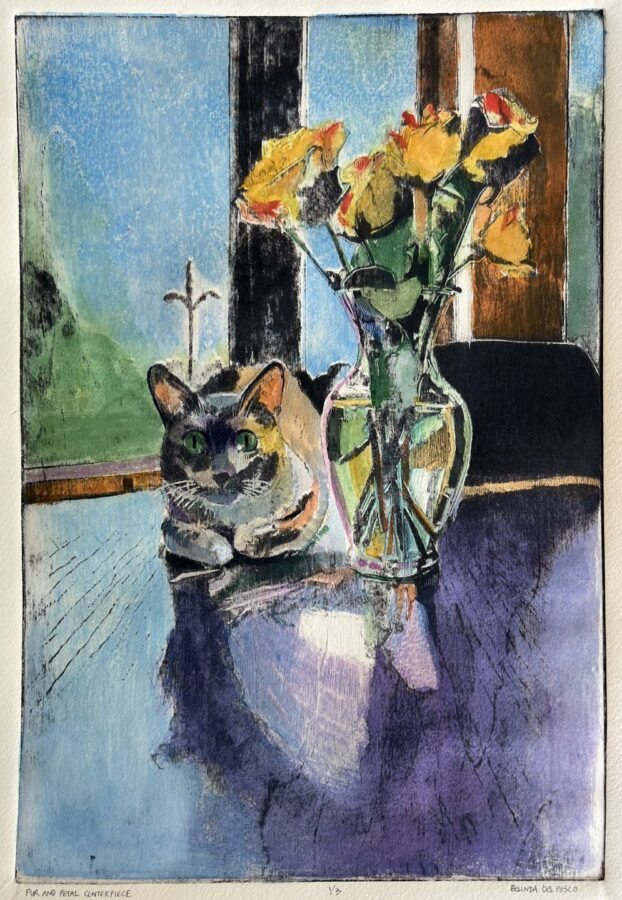
Art Quote
The world is full of magic things, patiently waiting for our senses to grow sharper.
W.B. Yeats
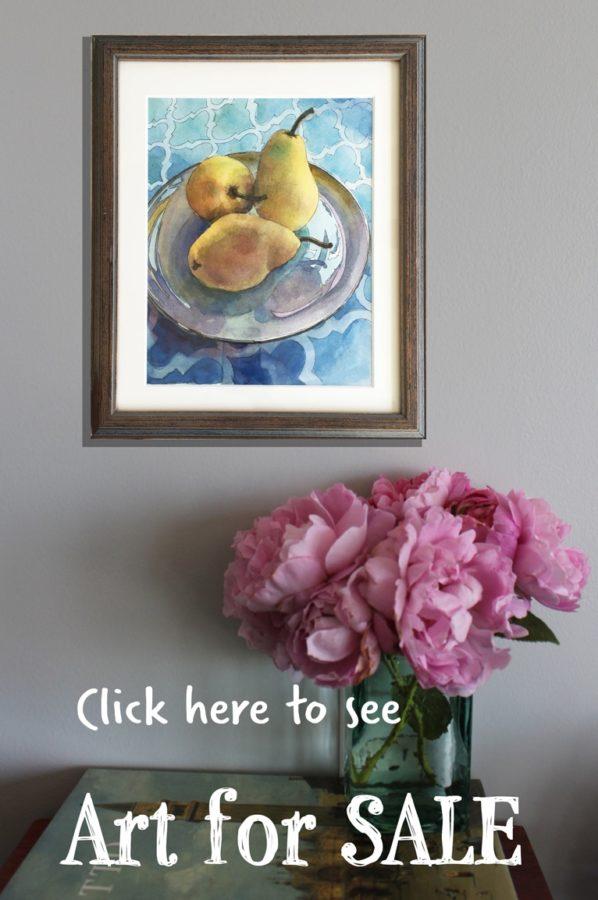

Hi Belinda,
It’s so exciting to see what you are creating with Mokulito printing. It seems like it was just what you needed to bring the enthusiasm back into your life after losing your muse. Your excitement is infectious and gets the creativity juices flowing. Your prints using this process are stunning – I love the way the grain of the wood enhances the print. Also I wanted to say congratulations on being one of the featured artists in “Art Supplies.” I had to get this book and haven’t been able to put it down. Also ended up ordering some handmade watercolors to play with. So much talent in this world and it’s fascinating reading. Thanks for sharing your new endeavors with us.
Thank you for your lovely, informative lessons. This is an intriguing type of printmaking.
Hi Corinne – Thanks for the feedback. I hope you have fun in your printmaking experiments. 🙂
This is fantastic! Love the finished result. But why only 3? Can’t you do more?
Hi Bonnie – Yes, you can make more prints in your edition with Mokulito. They will all vary a bit (or a lot, depending on how you approach inking), but you can absolutely make a bigger edition. I usually make small editions, for easier inventory management, and because I can’t wait to make something else. 🙂
Love your prints. I need to explore this type of printmaking. Thanks for tell us about it.
Hi Gabriele – Thanks for the compliment! Have fun in your printmaking explorations!
Hi Belinda, I’m wondering if it would work to make a dark field monotype using acrylic paint on a gel plate and then print that onto the Mokulito wood plate for the image? I love the look of the dark field but it would be great to get an edition instead of a single print! Also, do you treat the acrylic-painted plate with the gum Arabic? I’d love to see a video of your process! And it would be great for you to do an online workshop! Thanks, Ann
Hi Ann, Yes, you can transfer an acrylic-paint-monotype to a sheet of prepped/sanded wood, and then seal it with gum arabic. I have tried this twice with not good results, but Jeff Sippel made a *beautiful* Mokulito print with this exact monotype transfer process, so I think it’s a matter of trial and error and testing various materials. I find that ink sticks to acrylic laid on the wood with a heavier hand, so the monotype transfer may work better with heavy application of acrylic on the gelli plate. Have so much fun with your experiments!